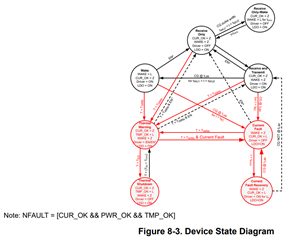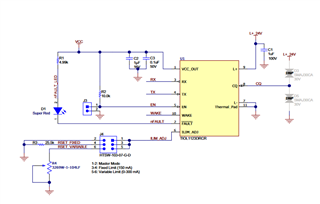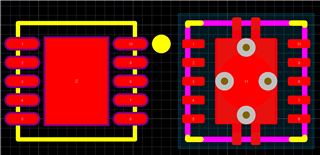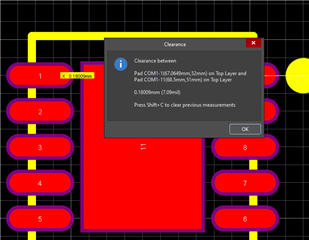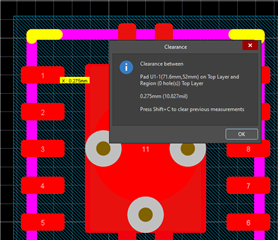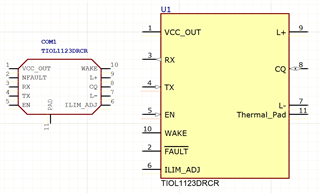Other Parts Discussed in Thread: ISO6763, TIOL112
Tool/software:
Hi,
I need a help to TIOL1123 circuits
TIOL1123 Vout doesn't work
VCCOUT Pin = 0V
I don't understand where I'm making the mistake.
We built 2 boards and I didnt try replacing. 2 boards the same result on VccOut. When I check all of the pins on boards, there is only one diffrence on pins, One of them CQ=19V and another one CQ=0V.
When I checked for short circuit, there is no fault.
Shouldn't VCCOut output 3V3 even if there is no load? Does the signal need to be given from any pin?
We are currently only checking the power outputs on the boards. We haven't moved on to the communication checks yet. That's why we are giving 0V to all input pins of TIOL1123 ( RX,TX,Wake, En,IoFault). Does this affect VccOut?
We feed the ISO6763 integrated circuit that we use for isolation from VCC OUT and we control all inputs and outputs of TIOL1123 with ISO6763. Is this causing a problem?
I am waiting for your valuable opinions and suggestions, I wish you good work.
Sincerely.


